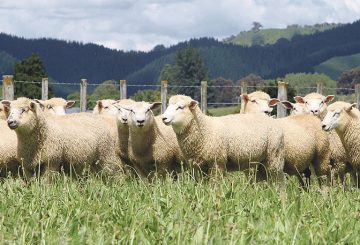Một bài báo gần đây của Fox News cho rằng cuộc chiến không gian đầu tiên sắp xảy ra và Mỹ phải chuẩn bị để giành chiến thắng. Điều này xảy ra giữa những lo ngại về khả năng Nga đưa vũ khí hạt nhân vào không gian. New Zealand cũng tham gia vào các cuộc thảo luận liên quan đến không gian này.
Vào tháng 3, Bộ trưởng Quốc phòng và Vũ trụ New Zealand, Judith Collins, đã được thông báo trước cuộc họp với đại sứ AUKUS của Hoa Kỳ. Mỹ đang lên kế hoạch sử dụng “biện pháp răn đe tích hợp”, liên quan đến việc sử dụng tất cả các đòn bẩy quyền lực quốc gia với các đồng minh và đối tác trên các lĩnh vực xung đột khác nhau, bao gồm cả không gian.
Vào tháng 4, Collins đã gặp các chỉ huy Không gian Hoa Kỳ tại Colorado Springs. Trong số đó có Tướng Stephen Whiting, người trước đó đã tuyên bố rằng Trung Quốc có một mạng lưới vệ tinh trên Thái Bình Dương và Mỹ cần phải bắt kịp.
Không gian đã rất quan trọng đối với Lực lượng Phòng vệ New Zealand (NZDF) và hợp tác với các quốc gia khác là chìa khóa. Tuy nhiên, NZDF hiện không có bất kỳ tài sản không gian nào và phụ thuộc hoàn toàn vào tài sản của đối tác hoặc thương mại.
Lực lượng Không gian Hoa Kỳ, mà Collins đã đến thăm, đã tăng trưởng đáng kể kể từ năm 2019, với ngân sách 47 tỷ đô la. Lực lượng này đang tìm kiếm các đối tác phóng thương mại để xây dựng mạng lưới vệ tinh của Mỹ và muốn thu hút các đồng minh nhiều hơn nữa.
Phòng thí nghiệm tên lửa của New Zealand đã giành được hợp đồng trị giá 840 triệu đô la vào tháng 12 năm ngoái với Cơ quan Phát triển Không gian của Lực lượng Vũ trụ. Thỏa thuận bảo vệ công nghệ với Mỹ cũng đã giúp Rocket Lab bằng cách cho phép chuyển giao công nghệ nhạy cảm.
New Zealand hiện đang xem xét “cơ sở hạ tầng không gian trên mặt đất” và “tăng cường khả năng tiếp cận các hiệu ứng không gian”. Kế hoạch năng lực quốc phòng mới của đất nước, dự kiến sẽ sớm được trình bày trước Nội các, nhấn mạnh việc làm việc với các đối tác an ninh quốc tế để đáp ứng các thách thức an ninh tập thể. Trong 15 năm tới, NZDF dự kiến sẽ triển khai thường xuyên hơn và trong nhiều tình huống hơn.




























































